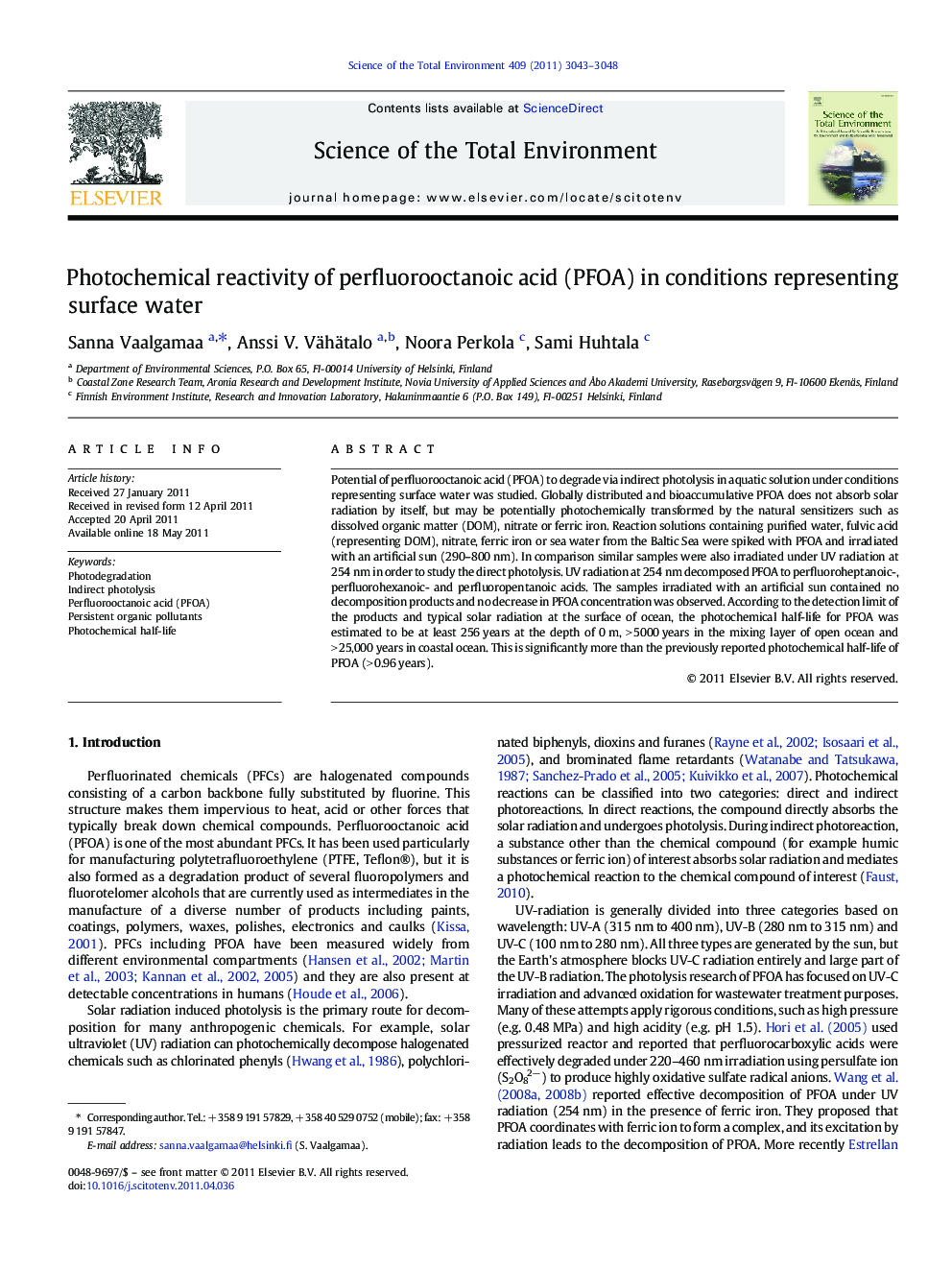| Article ID | Journal | Published Year | Pages | File Type |
|---|---|---|---|---|
| 4430202 | Science of The Total Environment | 2011 | 6 Pages |
Potential of perfluorooctanoic acid (PFOA) to degrade via indirect photolysis in aquatic solution under conditions representing surface water was studied. Globally distributed and bioaccumulative PFOA does not absorb solar radiation by itself, but may be potentially photochemically transformed by the natural sensitizers such as dissolved organic matter (DOM), nitrate or ferric iron. Reaction solutions containing purified water, fulvic acid (representing DOM), nitrate, ferric iron or sea water from the Baltic Sea were spiked with PFOA and irradiated with an artificial sun (290–800 nm). In comparison similar samples were also irradiated under UV radiation at 254 nm in order to study the direct photolysis. UV radiation at 254 nm decomposed PFOA to perfluoroheptanoic-, perfluorohexanoic- and perfluoropentanoic acids. The samples irradiated with an artificial sun contained no decomposition products and no decrease in PFOA concentration was observed. According to the detection limit of the products and typical solar radiation at the surface of ocean, the photochemical half-life for PFOA was estimated to be at least 256 years at the depth of 0 m, > 5000 years in the mixing layer of open ocean and > 25,000 years in coastal ocean. This is significantly more than the previously reported photochemical half-life of PFOA (> 0.96 years).
Research highlights► UV-vis irradiation (290–800 nm) with natural sensitizers did not promote decomposition of PFOA. ► The photochemical half-life of PFOA is at least 256 years at the depth of 0 m. ► In the mixing layer of open ocean the photochemical half-life is > 5000 years. ► In coastal ocean PFOA photochemical half-life is more than 25,000 years.
